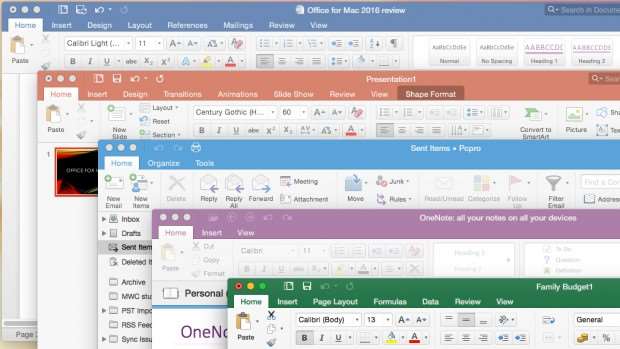

PowerPoint 2016 is neater and tidier and again matches the Windows version. PowerPoint 2011 had a particularly sprawling ribbon, with a total of nine tabs. There’s also a new equation editor (which will be familiar to Windows Excel users), which allows you to pick from common equations or build your own by dragging and dropping terms and functions. Macros are still supported in Excel 2016, but unless you save your spreadsheet as a macro-enabled file the menu entries are all greyed out so you can’t make a new macro. The logical grouping here makes it easier for pros to find what they want compared to Apple’s rival app Numbers, as well. Double click on a function and you get the fields to fill in – but you can still see your spreadsheet.

On the Mac, it’s a task pane docked neatly out of the way with enough room to list the functions and explain them. On Windows, it’s a pop-up dialog with a second dialog that helps you fill in the terms of a formula, but is usually on top of the cells you’re working with. More importantly, Excel for Mac 2016 includes more of the functions and formulas that are in Excel for Windows (including the Analysis Toolpak for complex engineering and statistical analysis), and the improved Formula Builder is still easier to use than in Excel 2013. Like Word, Excel 2016 has an improved ribbon using the same tabs as Excel 2013, but the similarities are now deeper than just the interface.


 0 kommentar(er)
0 kommentar(er)
